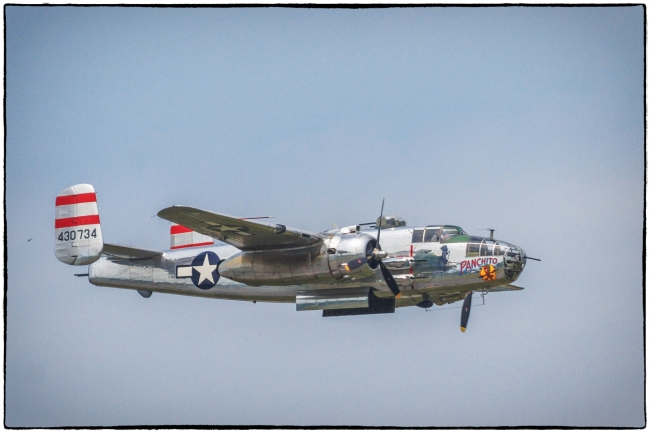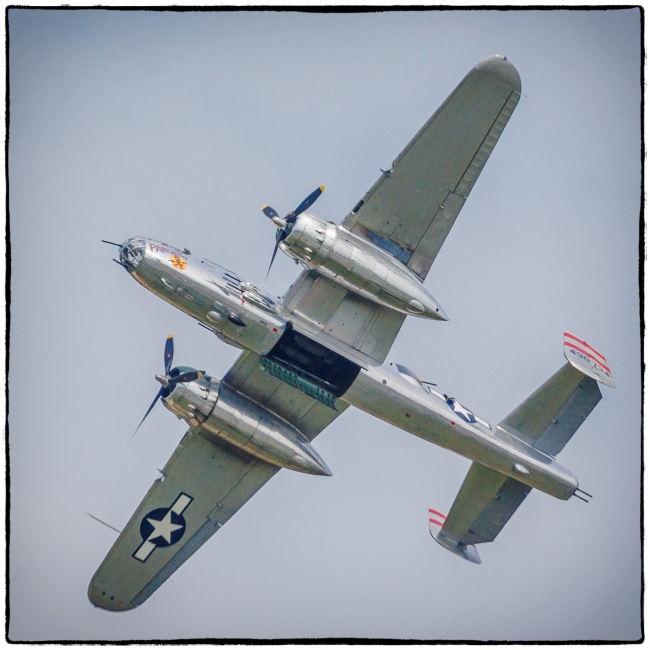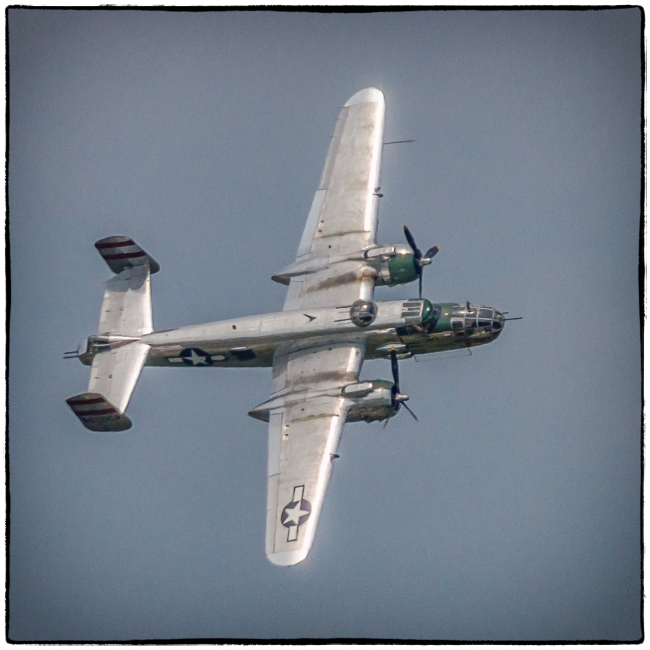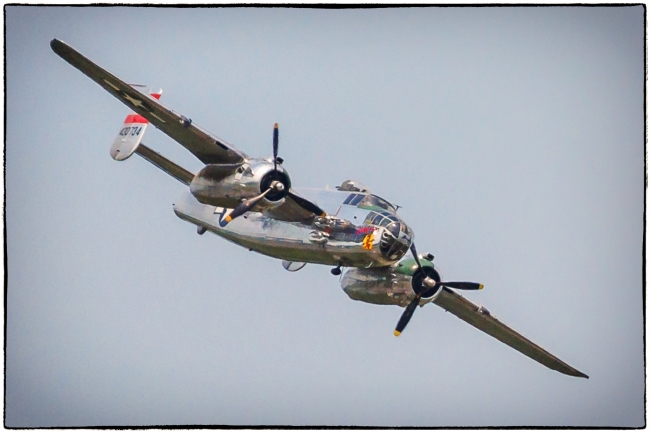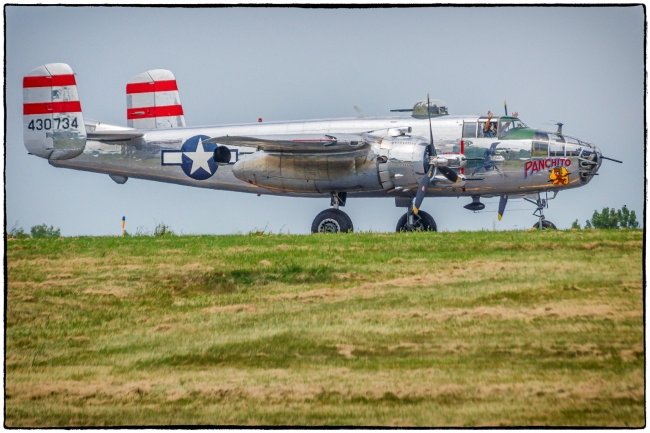After the modern technology of the F/A-18 we now step back in time to World War II (WWII) with the B-25 Mitchell, the plane used in the famous Doolittle Raid shortly after the attack on Pearl Harbour. The Boeing website describes the B25 as follows:
The North American B-25 Mitchell, a twin-engine bomber that became standard equipment for the Allied air forces in World War II, was perhaps the most versatile aircraft of the war. It became the most heavily armed airplane in the world, was used for high- and low-level bombing, strafing, photoreconnaissance, submarine patrol, and even as a fighter and was distinguished as the aircraft that completed the historic raid over Tokyo in 1942.
It required 8,500 original drawings and 195,000 engineering man-hours to produce the first one, but nearly 10,000 were produced from late 1939, when the contract was awarded to North American Aviation, through 1945.
Named for famed airpower pioneer Brigadier General William “Billy” Mitchell, it was a twin-tail, mid-wing land monoplane powered by two 1,700-horsepower Wright Cyclone engines.
Normal bomb capacity was 5,000 pounds (2268 kilograms). Some versions carried 75 mm cannon, machine guns and added firepower of 13 .50-caliber guns in the conventional bombardier’s compartment. One version carried eight .50-caliber guns in the nose in an arrangement that provided 14 forward-firing guns.
As a child I was fascinated by WWII aircraft as I suspect where many of my generation. I was born not long after the war and my father was a soldier in the British army during it as was one of my uncles. My father didn’t really like to talk about the war, but my uncle did. He would regale us with stories of his military prowess. Sometimes after he left my father, who was in the same regiment, would turn to me and say: “you know none of that was true”. One of the famous victories that stood out was, of course, the Battle of Britain – an air battle in which, so the story goes, a relatively small number of British pilots stood up to the might of the German Luftwaffe. Spitfires, Hurricanes, Messerschmitts and Focke-Wulfs (although the latter did not become operational until after the Battle of Britain was over) were all the well known to us. US aircraft were also known to us, although perhaps not as well as the their British equivalents. I certainly knew about the B25 and the Doolittle Raid. My friends and I used to make Airfix scale models of the best known planes. Some of my friends were really good at it and produced beautiful creations. I seemed to lack the skill to do it properly: I always managed to get glue all over my fingers and subsequently all over the kit. My attempt at the camouflage paint also always seemed to leave something to be desired. None of this stopped me building them though. After I’d done one I’d attach thread to it and tack it to the ceiling of my bedroom so that it would be hanging as if flying. These kits are still available and sometimes when I’ve seen them in stores I’ve been tempted to buy one to see if I could do a better job now.
So, of course, it was with some nostalgia that I watched this venerable old WWII warbird take to the skies.
Bomb bay doors open.
Top View.
Front View.
Taxiing and waving goodbye.

